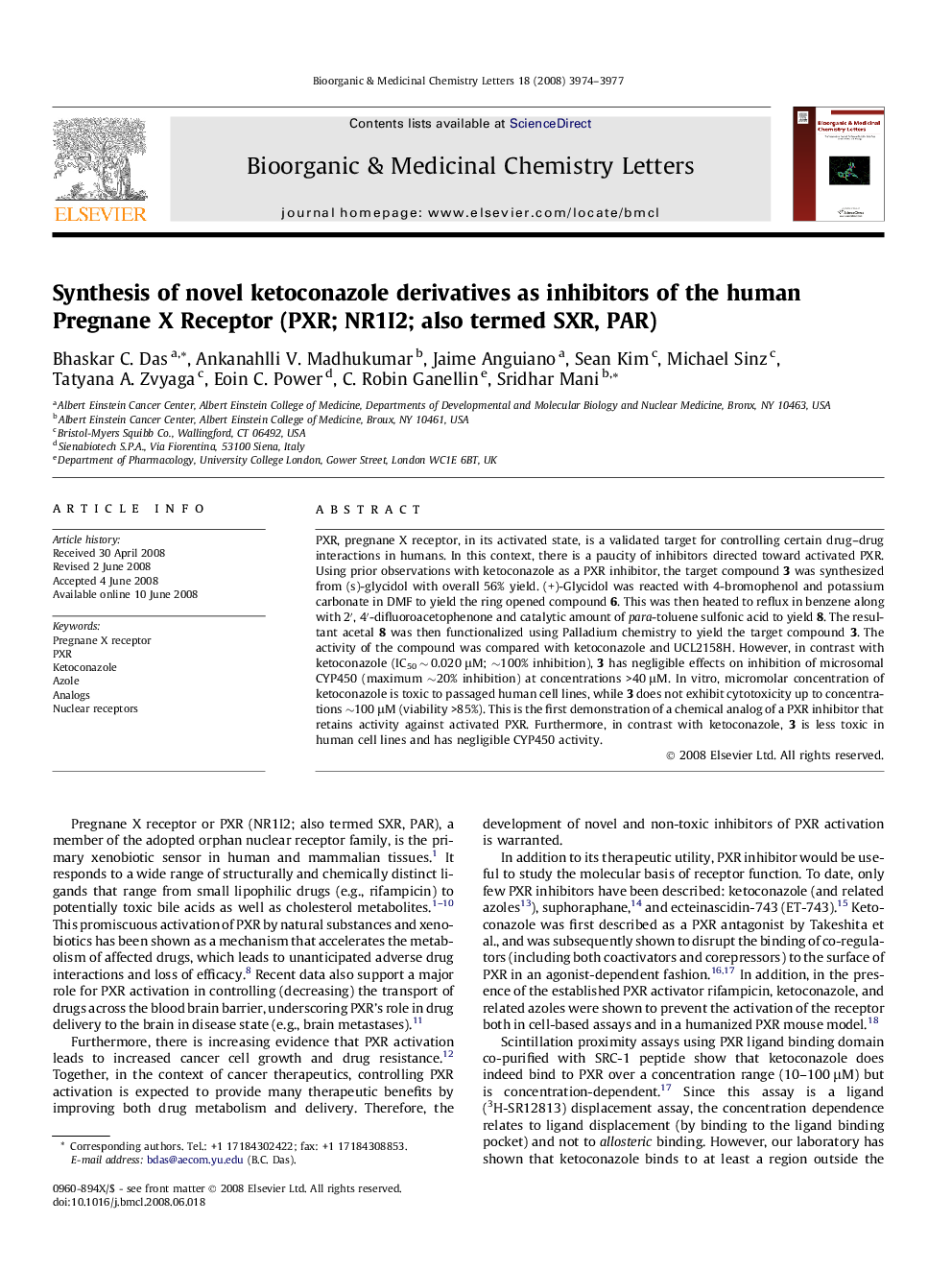| Article ID | Journal | Published Year | Pages | File Type |
|---|---|---|---|---|
| 1364987 | Bioorganic & Medicinal Chemistry Letters | 2008 | 4 Pages |
PXR, pregnane X receptor, in its activated state, is a validated target for controlling certain drug–drug interactions in humans. In this context, there is a paucity of inhibitors directed toward activated PXR. Using prior observations with ketoconazole as a PXR inhibitor, the target compound 3 was synthesized from (s)-glycidol with overall 56% yield. (+)-Glycidol was reacted with 4-bromophenol and potassium carbonate in DMF to yield the ring opened compound 6. This was then heated to reflux in benzene along with 2′, 4′-difluoroacetophenone and catalytic amount of para-toluene sulfonic acid to yield 8. The resultant acetal 8 was then functionalized using Palladium chemistry to yield the target compound 3. The activity of the compound was compared with ketoconazole and UCL2158H. However, in contrast with ketoconazole (IC50 ∼ 0.020 μM; ∼100% inhibition), 3 has negligible effects on inhibition of microsomal CYP450 (maximum ∼20% inhibition) at concentrations >40 μM. In vitro, micromolar concentration of ketoconazole is toxic to passaged human cell lines, while 3 does not exhibit cytotoxicity up to concentrations ∼100 μM (viability >85%). This is the first demonstration of a chemical analog of a PXR inhibitor that retains activity against activated PXR. Furthermore, in contrast with ketoconazole, 3 is less toxic in human cell lines and has negligible CYP450 activity.
Graphical abstractFigure optionsDownload full-size imageDownload as PowerPoint slide
